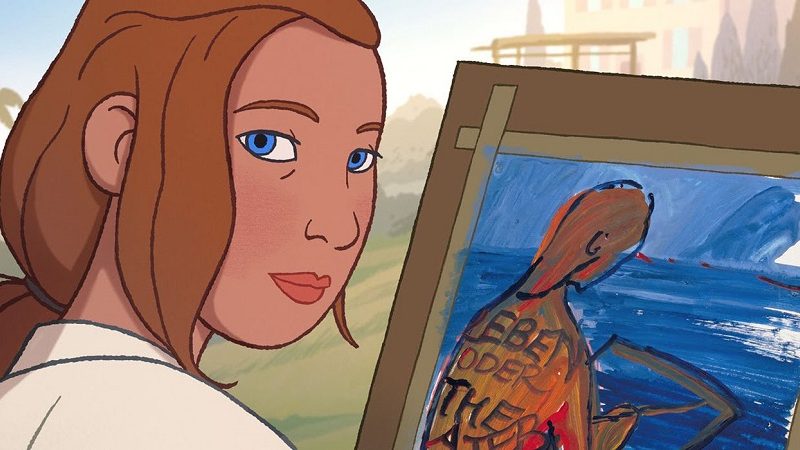Charlotte (Rana and Warin, 2021)
The similarities between Charlotte and Persepolis are so striking and so persistent that it feels suspicious to resist the former and embrace the latter. Both films are about female artists growing up in politically repressive environments. Both use animation to emulate the style of the artist depicted. Both of the subjects use their art in an autobiographical way, making themselves the subject of their own work. Yet while Persepolis engaged and moved with its story, Charlotte remains flat and plodding.
In the case of Charlotte, the protagonist is Charlotte Salomon, a German-Jewish artist known for a series of paintings entitled Life? or Theater? The film finally has an emotional impact only in the obligatory credits scenes where real-life footage of people surrounding Salomon’s life are interspersed with examples of her art. Most of the early reports I have seen praise Charlotte for using animation, but for my money the stylistic differences blunt the fact that there is no clear script. The film appears structured only to get us to the postscript. Rather than coming off as an impactful extra, the interviews seem like the film’s reason for being. And given that more emotion is packed in those last few minutes than in the preceding ninety, perhaps a talking-head documentary would have been a better way to go.
Charlotte has a ridiculous amount of voice talent attached: Keira Knightley, Jim Broadbent, Marion Cotillard, Brenda Blethyn, Eddie Marsan, Mark Strong, and Sophie Okonedo fill out the cast, but with characters as familiar as the animation is flat, the familiarity of the voices becomes more of a distraction than a benefit.
There are some details of the end of Charlotte’s life that are admittedly moving. Perhaps the film would work better as a short. It is worth checking out only if viewers are already interested in Salomon.
Charlotte opens locally in North Carolina at the a/perture theater in Winston-Salem on May 6.

